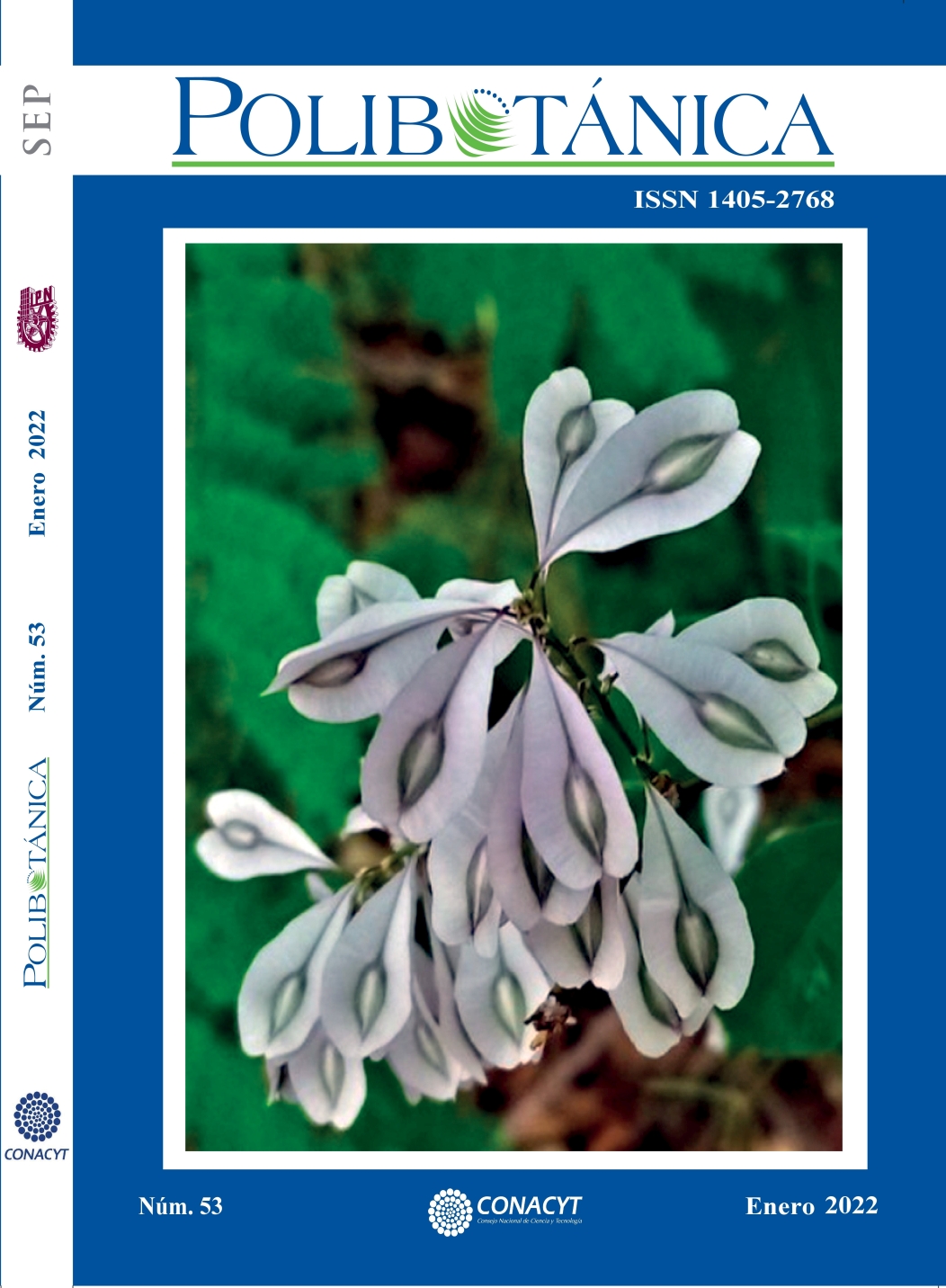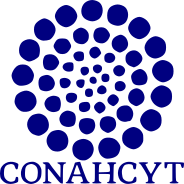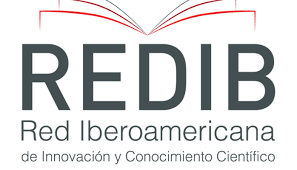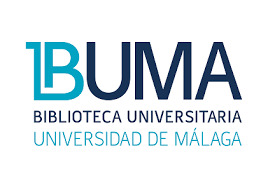Evaluación de extractos de árboles endemicos (Magnolia spp.) de México contra la plaga de la mosca de la fruta y estudio fitoquímico preliminar
DOI:
https://doi.org/10.18387/polibotanica.53.11Palabras clave:
Botanical pesticides, Bioactivity, Essential oil, Mexican fruit fly, Secondary metabolitesResumen
La plaga mosca de la fruta, ocasionada por Tefrítidos, afecta gravemente a los cultivos frutales en el mundo. El manejo integrado de la plaga incluye la aspersión de insecticidas sintéticos de amplio espectro. Debido a los efectos negativos a largo plazo del uso de insecticidas sintéticos, se han propuesto bioinsecticidas como nuevas alternativas ecológicas. En este estudio, se evaluó el potencial insecticida de Magnolia perezfarrerae, M. pugana y M. vovidesii contra Anastrepha ludens y A. obliqua. Además, se realizaron análisis químicos cualitativos para explorar la composición de los extractos crudos de sarcotesta de cuatro especies de Magnolia con efectividad insecticida. Los bioensayos de alimentación en individuos adultos consistieron en una mezcla de azúcar y extractos crudos de sarcotesta de Magnolia spp. Los perfiles químicos cualitativos se realizaron mediante cromatografía en capa fina usando siete sistemas de polaridad. Además, se identificaron grupos de metabolitos secundarios mediante análisis cualitativos. La efectividad insecticida de los extractos de Magnolia fue mayor al 93% contra A. ludens, por el contrario, la efectividad contra A. obliqua fluctuó desde el 66% hasta 92% en M. perezfarrerae y M. vovidesii, respectivamente. Los extractos de Magnolia mostraron una amplia diversidad de compuestos de diferentes polaridades. Además, se detectó la presencia de alcaloides, flavonoides y fenoles en todas las especies de Magnolia. Las propiedades insecticidas de Magnolia pueden contribuir al manejo integrado de la mosca de la fruta.
Referencias
Ahmed, M., Ji, M., Qin, P., Gu, Z., Liu, Y., Sikandar, A., Iqbal, M., F., & Javeed, A. (2019). Phytochemical screening, total phenolic and flavonoids contents and antioxidant activities of Citrullus colocynthis L. and Cannabis sativa L. Applied Ecology and Environmental Research, 17(3), 6961-6979. https://doi.org/10.15666/aeer/1703_69616979
Albuquerque, E. X., Pereira, E. F., Alkondon, M., & Rogers S. W. (2009). Mammalian nicotinic acetylcholine receptors: from structure to function. Physiological Reviews, 89(1), 73-120. https://doi.org/10.1152/physrev.00015.2008
Ali, R. I., & Ibrahim, M. A. (2018). Malathion induced testicular toxicity and oxidative damage in male mice: the protective effect of Curcumin. Egyptian Journal of Forensic Science, 8, 70. https://doi.org/10.1186/s41935-018-0099-x
Alonso-Castro, A., Domínguez, F., García-Regalado, A., González-Sánchez, I., Cerbón, M. A., & García-Carrancá, A. (2014). Magnolia dealbata seeds extract exert cytotoxic and chemopreventive effects on MDA-MB231 breast cancer cell. Pharmaceutical Biology, 52(5), 621-627. https://doi.org/10.3109/13880209.2013.859160
Amblard, F., Delinsky, D., Arbiser, J. L., & Schinazi R. F. (2006). Facile purification of Honokiol and its antiviral and cytotoxic properties. Journal of Medicinal Chemistry, 49(11), 3426-3427. https://doi.org/10.1021/jm060268m
Bang, K. H., Kim, Y. K., Min, B. S., Na, M. K., Rhee, Y. H., Lee, J. P., & Bae, K. H. (2000). Antifungal activity of Magnolol and Honokiol. Archives of Pharmacal Research 23, 46-49. https://doi.org/10.1007/BF02976465
Bhattacharya, A., Sood, P., & Citovsky, V. (2010). The roles of plant phenolics in defence and communication during Agrobacterium and Rhizobium infection. Molecular Plant Phathology, 11(5), 705-719. https://doi.org/10.1111/j.1364-3703.2010.00625.x
Blankson, W. A., Johnson, A. C., & Gurr, G. M. (2019). Natural enemy enhancement and botanicals insecticide source: a review of dual use companion plants. Applied Entomology and Zoology, 54, 1-19. https://doi.org/10.1007/s13355-018-00602-0
Brilinger, D., Wille, C. L., da Rosa, J. M., Franco, C. R., & Boff, M. I. C. (2019). Mortality assessment of botanicals oils on Anastrepha fraterculus (Wiedemann, 1830) applied in fruits under laboratory conditions. Journal of Agricultural Science, 11, 287-294. https://doi.org/10.5539/jas.v11n8p287
Chen, Y. H., Lu, M. H., Guo, D. S., Zhai, Y. Y., Miao, D., Yue, J. Y., Yuan, C. H., Zhao, M. M., & An, D. R. (2019). Antifungal effects of Magnolol and Honokiol from Magnolia officinalis on Alternaria alternata causing Tobacco brown spot. Molecules, 24(11), 2140. https://doi.org/10.3390/molecules24112140
Crossthwaite, A. J., Bigot, A., Camblin, P., Goodchild, J., Lind, R. J., Slater, R., & Maienfisch, P. (2017). The invertebrate pharmacology of insecticides acting at nicotinic acetylcholine receptors. Journal of Pesticide Science, 42(3), 67-83. https://doi.org/10.1584/jpestics.D17-019
Delgado, E. H. B., Streck, E. L., Quevedo, J. L., & Dal-Pizzol, F. (2006). Mitochondrial Respiratory Dysfunction and Oxidative Stress after Chronic Malathion Exposure. Neurochemical Research, 31(8), 1021-1025. https://doi.org/10.1007/s11064-006-9111-1
Díaz-Fleischer, F., Pérez-Staples, D., Cabrera-Mireles, H., Montoya, P., & Liedo, P. (2017). Novel insecticides and bait station for the control of Anastrepha fruit flies in mango orchards. Journal of Pest Science, 90(3), 865-872. https://doi.org/10.1007/s10340-017-0834-3
Domínguez, X. A. (1973). Métodos de investigación fitoquímica (4ta Edición). Limusa. México.
Fang, C. Y., Chen, S. J., Wu, H. N., Ping, Y. H., Lin, C. Y., Shiuan, D., Chen, C. L., Lee, Y. R., & Huang, K. J. (2015). Honokiol, a lignan biphenol derived from the Magnolia Tree, inhibits Dengue virus type 2 infection. Viruses, 7(9), 4894-4910. https://doi.org/10.3390/v7092852
Flores-Estévez, N., Vásquez-Morales, S. G., Cano-Medina, T., Sánchez-Velásquez, L. R., Noa-Carrazana, J. C., & Díaz-Fleischer, F. (2013). Insecticidal activity of raw extracts from Magnolia dealbata Zucc on a tephritid pest. Journal of Environmental Science Health, Part B, 48(7), 585-589. https://doi.org/10.1080/03601234.2013.774933
González-Esquinca, A. R., Luna-Cazáres, L. M., Schlie-Guzmán, M. A., de la Cruz-Chacón, I., Laguna-Hernández, G., Flores-Breceda, S., & Montoya-Gerardo, P. (2012). In vitro larvicidal evaluation of Annona muricata L., A. diversifolia Saff. and A. lutescens Saff. extracts against Anastrepha ludens larvae (Diptera, Tephritidae). Interciencia, 37, 284-289.
Haouas, D., Luigi-Cioni, P., Halima-Kamel, M. B., Flamini, G., & Hamouda, M. H. B. (2012). Chemical composition and bioactivities of three Chrysanthemum essential oils against Tribolium confusum (du Val) (Coleoptera: Tenebrionidae). Journal of Pest Science, 85(3), 367-379. https://doi.org/10.1007/s10340-012-0420-7
Hernández-Carlos, B., & Gamboa-Angulo, M. (2019). Insecticidal and Nematicidal Contribution of Mexican Flora in the Search for Safer Biopesticides. Moleculas, 24(5), 897. https://doi.org/10.3390/molecules24050897
Hernández-Ortiz, V. (1993). Taxonomy, Distribution, and Natural Host Plant of Anastrepha Fruit Flies in Mexico. In Fruit Flies Biology and Management (pp. 31–34). Springer Science +Busines Media New York. Springer Verlag New York. Inc. New York, U.S. https://doi.org/10.1007/978-1-4757-2278-9
Hernández-Ortiz, V., Guillén-Aguilar, J., & López, L. (2010). Taxonomía e identificación de Moscas de la Fruta de Importancia Económica en América. In Moscas de la Fruta: Fundamento y Procedimiento para su Manejo (pp. 49-80). S y G editores, México, D.F.
Hong, L., Li, G., Zhou, W., Wang, X., & Zhang, K. (2007). Screening and isolation of a nematicidal sesquiterpene from Magnolia grandiflora L. Pest Management Science, 63(3), 301-305. https://doi.org/10.1002/ps.1337
Hsu, J. C., & Feng, H. T. (2006). Development of resistance to spinosad in Oriental fruit fly (Diptera: Tephritidae) in laboratory selection and cross resistance. Journal Economic of Entomology, 99(3), 931-936. https://doi.org/10.1603/0022-0493-99.3.931
Isman, M. B. 2000. Plant essential oils for pest and disease management. Crop Protection, 19(8-10), 603-608. https://doi.org/10.1016/S0261-2194(00)00079-X
Jacobo-Salcedo, M. R., González-Espindola, L. A., Alonso-Castro, A. J., González-Martínez, M. R., Domínguez, F., & García-Carranca, A. (2011). Antimicrobial activity and cytotoxic effects of Magnolia dealbata and its active compounds. Natural Product Communications, 6(8), 1121-1124. https://doi.org/10.1177/1934578X1100600818
Jyoti Singh, N. K., Singh, H., & Rath, S. S. (2014). Malathion resistance in Rhipicephalus (Boophilus) microplus from Ludhiana district, Punjab. Journal of Parasitic Diseases, 38(4), 343-346. https://doi.org/10.1155/2014/594398
Kelm, M. A., Nair, M. G., & Schutzki, R. A. (1997). Mosquitocidal compounds from Magnolia salicifolia. International Journal of Pharmacognosy, 35(2), 84-90. https://doi.org/10.1076/phbi.35.2.84.13279
Krishnamurthy, S.V., & Smith, G. R. (2011). Combined effects of Malathion and nitrate on early growth, abnormalities, and mortality of wood frog (Rana sylvatica) tadpoles. Ecotoxicology, 20(6), 1361-1367. https://doi.org/10.1007/s10646-011-0692-3
Lee, Y. J., Lee, Y. M., Lee, C. K., Jung, J. K., Han, S. B., & Hong, J. T. (2011). Therapeutic applications of compounds in the Magnolia family. Pharmacology & Therapeutics, 130(2), 157-176. https://doi.org/10.1016/j.pharmthera.2011.01.010
Lin, D., Yan, Z., Yi, Y., Li, K., Ye, J., Hu, A., Long, C., & Liu, A. (2019). Structural modification, fungicidal and insecticidal activity of 5-arylbenzofuran neolignan from Magnolia officinalis. Phytochemistry Letters, 30, 53-57. https://doi.org/10.1016/j.phytol.2019.01.016
Magaña, C., Hernández-Crespo, P., Brun-Barale, A., Couso-Ferrer, F., Bride, J. M., Castañera, P., Feyereisen, R., & Ortego, F. (2008). Mechanisms of resistance to malathion in the medfly Ceratitis capitata. Insect Biochemistry and Molecular Biology, 38(8), 756-762. https://doi.org/10.1016/j.ibmb.2008.05.001
Maheswaran, R., & Ignacimuthu, S. (2012). A novel herbal formulation against dengue vector mosquitoes Aedes aegypti and Aedes albopictus. Parasitology Research, 110(5), 1801-1813. https://doi.org/10.1007/s00436-011-2702-z
Miyatake, T. (2011). Insect quality control: synchronized sex, mating system, and biological rhythm. Applied Entomology and Zoology, 46, 3-14. https://doi.org/10.1007/s13355-010-0017-7
Miyazawa, M., Ishikawa, Y., Kasahara, H., Yamanaka, J., & Kameoka, H. (1994). An insect growth inhibitory lignan from flower buds of Magnolia fargesii. Phytochemistry, 35(3), 611-613. https://doi.org/10.1016/S0031-9422(00)90572-7
Montoya, P., Toledo, J., & Hernández, E. (2010). Moscas de la Fruta: Fundamento y Procedimiento para su Manejo. S y G Editores, México, D.F.
Mora-Arango, C. L., Galeano-Jaramillo, E., & Osorio-Durango, E. (2012). Manual de prácticas de laboratorio de farmacognosia I. Facultad de Química Farmacéutica. Universidad de Antioquia, Medellín, Colombia.
Nitao, J. K., Johnson, K. S., Scriber, M., & Nair, M. G. (1992). Magnolia virginiana neolignan compounds as chemical barriers to swallowtail butterfly host use. Journal of Chemical Ecology, 18, 1661-1671. https://doi.org/10.1007/BF00993237
Norrbom, A. L., Carroll, L. E., Thompson, F. C., White, I. M., & Freidberg, A. (2012). Onwards. Anastrepha and Toxotrypana: descriptions, illustrations, and interactive keys, version 9th April 2019. https://www.delta-intkey.com/anatox/index.html
Poivre, M., & Duez, P. (2017). Biological activity and toxicity of the Chinese herb Magnolia officinalis Rehder & E. Wilson (Houpo) and its constituents. Journal of Zhejiang University Science B, 18(3), 194-214. https://doi.org/10.1631/jzus.B1600299
R Core Team. (2013). R: A Language and Environment for Statistical Computing. Version 3.3.1. R. Foundation for Statistical Computing. Vienna, Austria.
Rossi, Y. E., & Palacios S. M. (2013). Fumigant toxicity of Citrus sinensis essential oil on Musca domestica L. adults in the absence and presence of a P450 inhibitor. Acta Tropica, 127(1), 33-37. https://doi.org/10.1016/j.actatropica.2013.03.009
Sánchez, J. E., Jiménez-Pérez, G., & Liedo, P. (2015). Can consumption of antioxidant rich mushrooms extend longevity?: antioxidant activity of Pleurotus spp. and its effects on Mexican fruits flies´ (Anastrepha ludens) longevity. Age, 37(6), 107. https://doi.org/10.1007/s11357-015-9847-0
Sánchez-Velásquez, L. R., Pineda-López, M. R., Vásquez-Morales, S. G., & Avandaño-Yañez, M. L. (2016). Ecology and conservation of endangered species: the case of Magnolias (pp. 63-84). In Endangered species: Threats, Conservation and Future Research. Nova Science Publisher, Inc.
Sarkar, M., & Kshirsagar, R. (2014). Botanical pesticides: current challenges and reverse pharmacological approach for future discoveries. Journal of Biofertilizers of Biopesticides, 5(2), 1000e125. https://doi.org/10.4172/2155-6202.1000e125
Sarker, S. D., Latif, Z., Stewart, M., & Nahar, L. (2002). Phytochemistry of the genus Magnolia (pp. 21-74). In Magnolia. The genus Magnolia. Taylor & Francis. New York. U.S.
Servicio Nacional de Sanidad, Inocuidad y Calidad Agroalimentaria. [SENASICA]. (2019). Manual Técnico para las Operaciones de Campo de la Campaña Nacional contra Mosca de la Fruta. Sanidad Vegetal. Campaña Nacional Contra Moscas de la Fruta (CNMF), Secretaría de agricultura y Desarrollo Rural (SADER), Gobierno Federal, México. https://www.gob.mx/cms/uploads/attachment/file/501537/CIRCULAR-114-OF-09309-Manual_control_qu_mico__anexo__1.pdf
Servicio Nacional de Sanidad, Inocuidad y Calidad Agroalimentaria. [SENASICA]. (2021). Quinto informe mensual. Sanidad Vegetal. Campaña Nacional Contra Mosca de la Fruta (CNMF), Secretaría de agricultura y Desarrollo Rural (SADER), Gobierno Federal, México. https://www.gob.mx/cms/uploads/attachment/file/647179/Informe_mensual_CNMF__Mayo.pdf
Singh, S. K., Tripathi, P. K., Yadav, R. P., Singh, D., & Singh, A. (2004). Toxicity of Malathion and Carbaryl Pesticides: Effects on Some Biochemical Profiles of the Freshwater Fish Colisa fasciatus. Bulletin of Environomental Contamination and Toxicology, 72, 592-599. https://doi.org/10.1007/s00128-004-0285-4
Siskos, E. P., Konstantopoulou, M. A., Mazomenos, B. E., & Jervis, M. (2007). Insecticidal activity of Citrus aurantium fruit, leaf, and shoot extracts against adult olive fruits flies (Diptera: Tephritidae). Journal of Economic Entomology, 100(4), 1215-1220. https://doi.org/10.1111/j.1439-0418.2008.01312.x
Smith, G. R., Krishnamurthy, S. V. B., Burger, A. C., & Rettig, J. E. (2018). Effects of Malathion and nitrate exposure on the zooplankton community in experimental mesocosms. Environmental Science and Pollution Research International, 25(10), 9992-9997. https://doi.org/10.1007/s11356-018-1311-0
Thakur, S., & Sidhu, M. C. (2013). Phytochemical screening of leaves and seeds of Magnolia grandiflora L. Der Pharmacia Lettre, 5, 278-282.
Vázquez-G, J. A., Carvajal, S., & Hernández, L. L. (2002). Magnolia pugana (Magnoliaceae): Una nueva combinación en el complejo M. pacifica. Novon, 12(1), 137-141. https://doi.org/10.2307/3393253
Vásquez-Morales, S. G., Flores-Estévez, N., Sánchez-Velásquez, L. R., Pineda-López, M. R., Viveros-Viveros, H., & Díaz-Fleischer, F. (2015). Bioprospecting of botanical insecticides: The case of ethanol extracts of Magnolia schiedeana Schltl., applied to a Tephritid, fruit fly Anastrepha ludens Loew. Journal of Entomology and Zoology Studies, 3(1), 01-05. https://doi.org/10.22271/j.ento
Vásquez-Morales, S. G., & Ramírez-Marcial, N. (2019). Seed germination and population structure of two endangered tree species: Magnolia perezfarrerae and Magnolia sharpii. Botanical Science, 91(1), 02-12. https://doi.org/10.17129/botsci.1977
Vásquez-Morales, S. G., Sánchez-Velásquez, L. R., Pineda-López, M. R., Díaz-Fleischer, F., Flores-Estévez, N., & Viveros-Viveros, H. (2017). Moderate anthropogenic disturbance does not affect the demography of Magnolia schiedeana, an endangered species from Mexico. Flora, 234, 77-83. https://doi.org/10.1016/j.flora.2017.07.005
Wang, Z., Perumalsamy, H., Wang, X., & Ahn, Y. J. (2019). Toxicity and possible mechanisms of action of Honokiol from Magnolia denudata seeds against four mosquito species. Scientific Reports, 9, 411. https://doi.org/10.1038/s41598-018-36558-y
Wu, B., Fu, S. H., Tang, H., Chen, K., Zhang, Q., Peng, A. H., Ye, H. Y., Cheng, X. J., Lian, M., Wang, Z. L., & Chen, L. J. (2018a). Design, synthesis and antibacterial evaluation of honokiol derivatives. Bioorganic & Medicinal Chemistry Letters, 28(4), 834-838. https://doi.org/10.1016/j.bmcl.2017.06.022
Wu, H., Liu, T., Zhang, Z., Wang, W., Zhu, W., Li, L., Li, Y., & Chen, X. (2018b). Leaves of Magnolia liliflora Desr. as a high-potential by-product: Lignans composition, antioxidant, anti-inflammatory, anti-phytopathogenic fungal and phytotoxic activities. Industrial Crops and Products, 125, 416-424. https://doi.org/10.1016/j.indcrop.2018.09.023
Yan, R., Wang, W., Guo, J., Liu, H., Zhang, J., & Yang, B. (2013). Studies on the alkaloids of the bark of Magnolia officinalis: isolation and on-line analysis by HPLC-ESI-MSn. Molecules, 18(7), 7739-7750. https://doi.org/10.3390/molecules18077739
Yang, C., Zhi, X., Li, J., Zha, J., & Xu, H. 2015. Natural products-based insecticidal agents 20. Design, synthesis and insecticidal activity of novel honokiol/magnolol azo derivates. Industrial Crops and Products, 76, 761-767. https://doi.org/10.1016/j.indcrop.2015.08.003
Zhang, B., Yu, H., Lu, W., Yu, B., Liu, L., Jia, W., Lin, Z., Wang, H., & Chen, S. (2019). Four new honokiol derivatives from the stem bark of Magnolia officinalis and their anticholinesterase activities. Phytochemistry Letters, 29, 195–198. https://doi.org/10.1016/j.phytol.2018.12.015
Descargas
Archivos adicionales
Publicado
Número
Sección
Licencia

Polibotánica por Departamento de Botánica de la Escuela Nacional de Ciencias Biológicas del Instituto Politécnico Nacional se distribuye bajo una Licencia Creative Commons Atribución-NoComercial-CompartirIgual 4.0 Internacional.




















